This article needs additional citations for verification .(December 2009) |
| |||
|---|---|---|---|
| Buildings and structures +... |
The year 1817 in architecture involved some significant events.
This article needs additional citations for verification .(December 2009) |
| |||
|---|---|---|---|
| Buildings and structures +... |
The year 1817 in architecture involved some significant events.


Augustus Welby Northmore Pugin was an English architect, designer, artist and critic with French and, ultimately, Swiss origins. He is principally remembered for his pioneering role in the Gothic Revival style of architecture. His work culminated in designing the interior of the Palace of Westminster in Westminster, London, England, and its iconic clock tower, later renamed the Elizabeth Tower, which houses the bell known as Big Ben. Pugin designed many churches in England, and some in Ireland and Australia. He was the son of Auguste Pugin, and the father of Edward Welby Pugin and Peter Paul Pugin, who continued his architectural firm as Pugin & Pugin. He also created Alton Castle in Alton, Staffordshire.
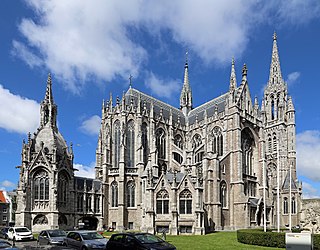
Gothic Revival is an architectural movement that began in the late 1740s in England. The movement gained momentum and expanded in the first half of the 19th century, as increasingly serious and learned admirers of the neo-Gothic styles sought to revive medieval Gothic architecture, intending to complement or even supersede the neoclassical styles prevalent at the time. Gothic Revival draws upon features of medieval examples, including decorative patterns, finials, lancet windows, and hood moulds. By the middle of the 19th century, Gothic Revival had become the preeminent architectural style in the Western world, only to fall out of fashion in the 1880s and early 1890s.
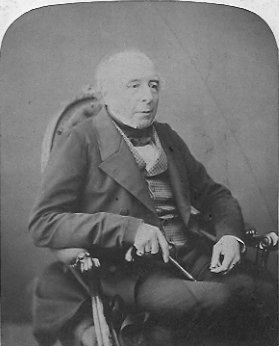
Philip Hardwick was an English architect, particularly associated with railway stations and warehouses in London and elsewhere. Hardwick is probably best known for London's demolished Euston Arch and its twin station, the original Birmingham Curzon Street, which stands today as the oldest railway terminus building in the world.
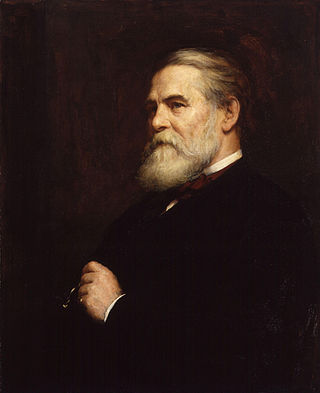
John Loughborough Pearson was a British Gothic Revival architect renowned for his work on churches and cathedrals. Pearson revived and practised largely the art of vaulting, and acquired in it a proficiency unrivalled in his generation. He worked on at least 210 ecclesiastical buildings in England alone in a career spanning 54 years.

Dulwich Picture Gallery is an art gallery in Dulwich, South London, which opened to the public in 1817. It was designed by Regency architect Sir John Soane using an innovative and influential method of illumination. Dulwich is the oldest public art gallery in England and was made an independent charitable trust in 1994. Until this time the gallery was part of the College of God's Gift, a charitable foundation established by the actor, entrepreneur, and philanthropist Edward Alleyn in the early 17th century. The acquisition of artworks by its founders and bequests from its many patrons resulted in Dulwich Picture Gallery housing one of the country's finest collections of Old Masters, especially rich in French, Italian, and Spanish Baroque paintings, and in British portraits from Tudor times to the 19th century.
The year 1897 in architecture involved some significant events.
The year 1901 in architecture involved some significant events.
The year 1883 in architecture involved some significant events.
The year 1812 in architecture involved some significant events.
The year 1864 in architecture involved some significant architectural events and new buildings.
The year 1789 in architecture involved some significant events.
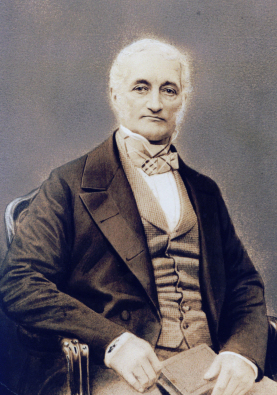
William Burn was a Scottish architect. He received major commissions from the age of 20 until his death at 81. He built in many styles and was a pioneer of the Scottish Baronial Revival,often referred to as the golden age of Scottish architecture.
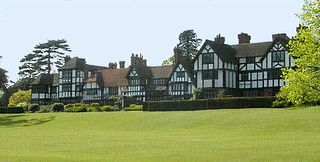
Tudor Revival architecture, also known as mock Tudor in the UK, first manifested in domestic architecture in the United Kingdom in the latter half of the 19th century. Based on revival of aspects that were perceived as Tudor architecture, in reality it usually took the style of English vernacular architecture of the Middle Ages that had survived into the Tudor period. The style later became an influence elsewhere, especially the British colonies. For example, in New Zealand, the architect Francis Petre adapted the style for the local climate. In Singapore, then a British colony, architects such as Regent Alfred John Bidwell pioneered what became known as the Black and White House. The earliest examples of the style originate with the works of such eminent architects as Norman Shaw and George Devey, in what at the time was considered Neo-Tudor design.
The year 1829 in architecture involved some significant events.
Events from the year 1817 in the United Kingdom.
The year 1836 in architecture involved some significant events.

Two Temple Place, known for many years as Astor House, is a Neo-Gothic building situated near Victoria Embankment in central London, England. It is known for its architecture, and contains notable works by the likes of William Silver Frith, Sir George Frampton RA, Nathaniel Hitch and Thomas Nicholls.

The Church of St John the Evangelist is a Church of England church in Upper Norwood, a suburb of South London, in the United Kingdom. It is a Grade II* listed red brick Gothic Revival church which was built between 1878 and 1887 by the English architect John Loughborough Pearson (1817–97). The church is dedicated to the Christian saint, John the Evangelist.
Edward Goldie (1856–1921) was an English ecclesiastical architect who was notable for building Roman Catholic churches, mainly in the form of Gothic Revival architecture. He was the son of George Goldie.

The Fitzrovia Chapel is situated in Pearson Square, in the centre of the Fitzroy Place development, bordered by Mortimer Street, Cleveland Street, Nassau Street and Riding House Street in Fitzrovia, Westminster. The chapel was designed by John Loughborough Pearson, and was built 1891–92, and though already in use, the interiors weren’t completed until 1929, overseen by his son Frank Loughborough Pearson (1864–1947).